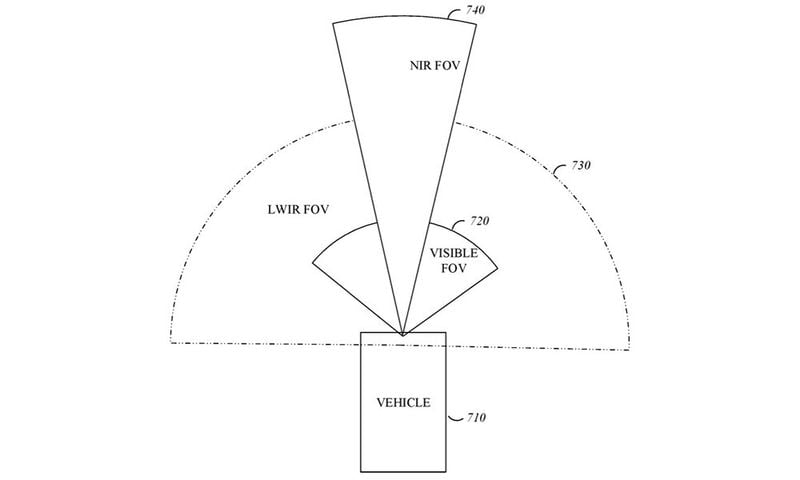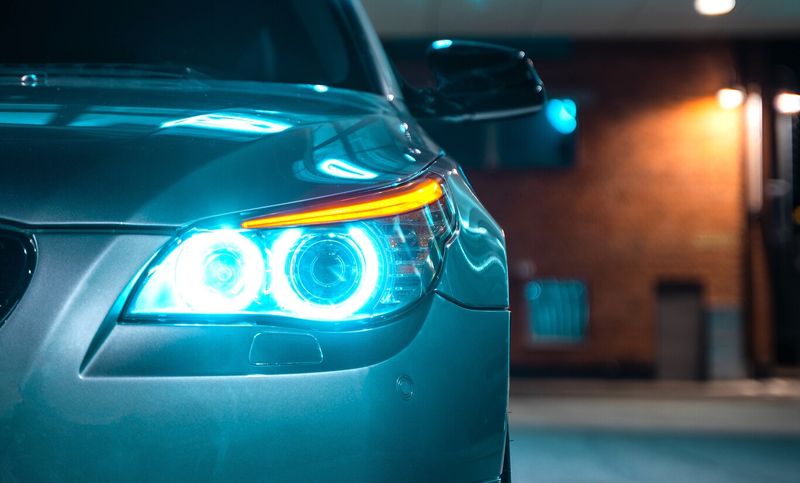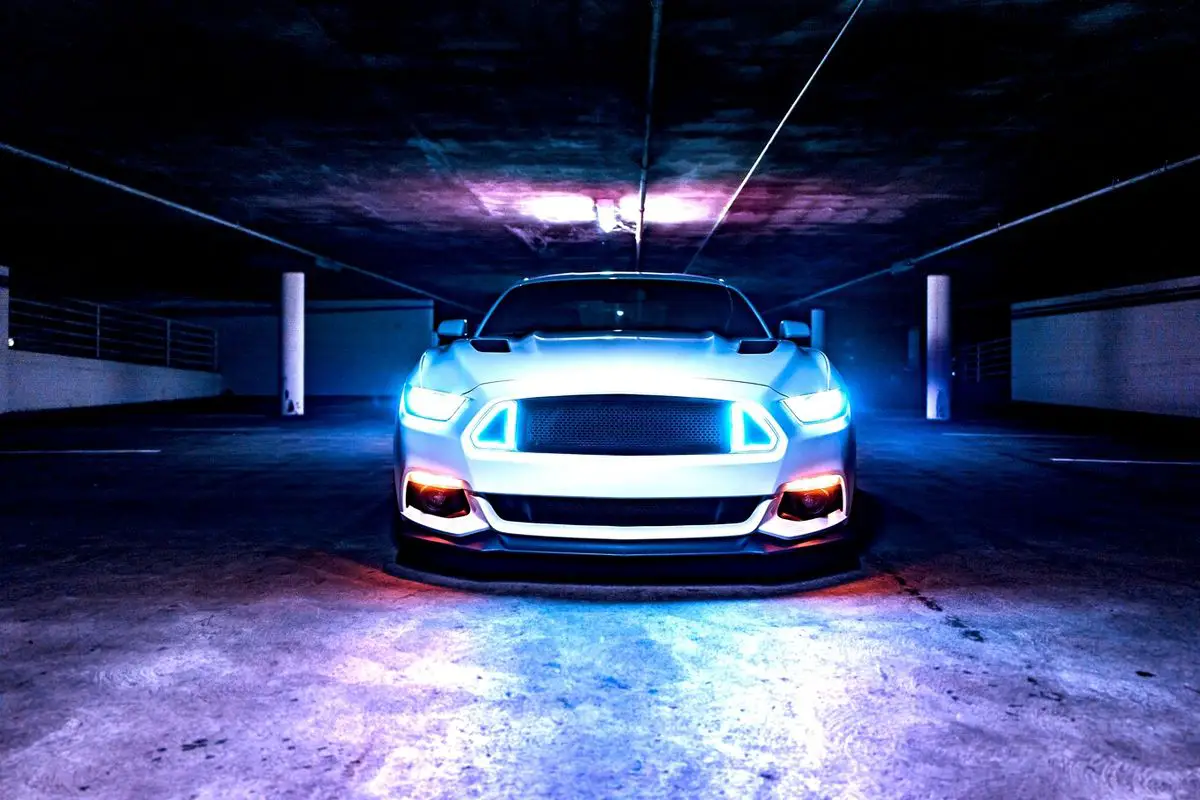We continue with the flow of Apple Car patents that, slowly but progressively, is giving us information about the technologies that Apple is exploring for its future autonomous car. In this case, we are talking about the car’s ability to “see” in the dark up to three times farther than a human driver.
Apple Car will see three times farther in the dark thanks to infrared lights
The patent, titled “Nighttime sensing”, talks about using a system that combines visible light, shortwave infrared and longwave infrared to be able to see up to three times farther than what technology currently allows.
Apple starts by telling that currently, autonomous cars have the same vision limitations as humans when driving at night. This is a distance of about 60 meters, which is the area of illumination that the vehicle reaches.

Nighttime or low-light environments present challenges for automated vehicle control systems. For example, the level of illumination provided by a vehicle’s headlights at night may be limited by laws or regulations, which in turn may limit the effective range of a visible spectrum sensor (e.g., a camera) used to detect objects in or near the vehicle’s path. Having a limited effective range (e.g., about 60 meters) to detect and/or classify objects may reduce safety and/or reduce the speed at which the vehicle can safely travel.
A combination of three kinds of lighting with which to anticipate any obstacles or unforeseen events on the road.
By law, the illumination power of the headlights is regulated to avoid dazzling other drivers. However, this limitation only applies to visible light, so infrared illumination can be much more powerful. With the necessary sensors, the car could detect road irregularities much earlier than today’s cars can and much more than a human driver is capable of.

There may be looser or no restrictions on the illumination level of a vehicle-mounted near-infrared illuminator. A near-infrared sensor with a near-infrared illuminator can be configured to capture high-resolution image information about objects in or near the path of the vehicle up to a significantly greater distance (e.g., 200 meters) from the vehicle. This can enable earlier detection and classification of objects as the vehicle moves and improve safety and/or top speed. Near-infrared illuminators can project near-infrared light in a relatively narrow field of view (e.g., a 30-degree cone).
The patent then describes how near-infrared light is the one that gives greater vision, while longwave light gives more field of view. Between the two, a most useful combination is achieved in most circumstances.
While we do not know what Apple’s plans are for the Apple Car, what is certain is that the investment they are making to develop autonomous driving technologies is more than considerable. We will see in what kind of product all this technology materializes.





